The Data Detox: Why Your Marketing Automation Craves Clean Data
In this blog, we’ll be exploring why data management is the backbone of marketing automation and how we can maintain clean, enriched, and accurate databases in marketing automation tools.
We all want to build relevant campaigns to increase the conversion rate, but often forget the foundation: “Data“.
Clean data is a necessity to build accurate campaigns. No matter which Marketing Automation Tool one uses, poor data quality can lead to misfired campaigns, cause compliance issues, inaccurate reporting, and wasted resources.
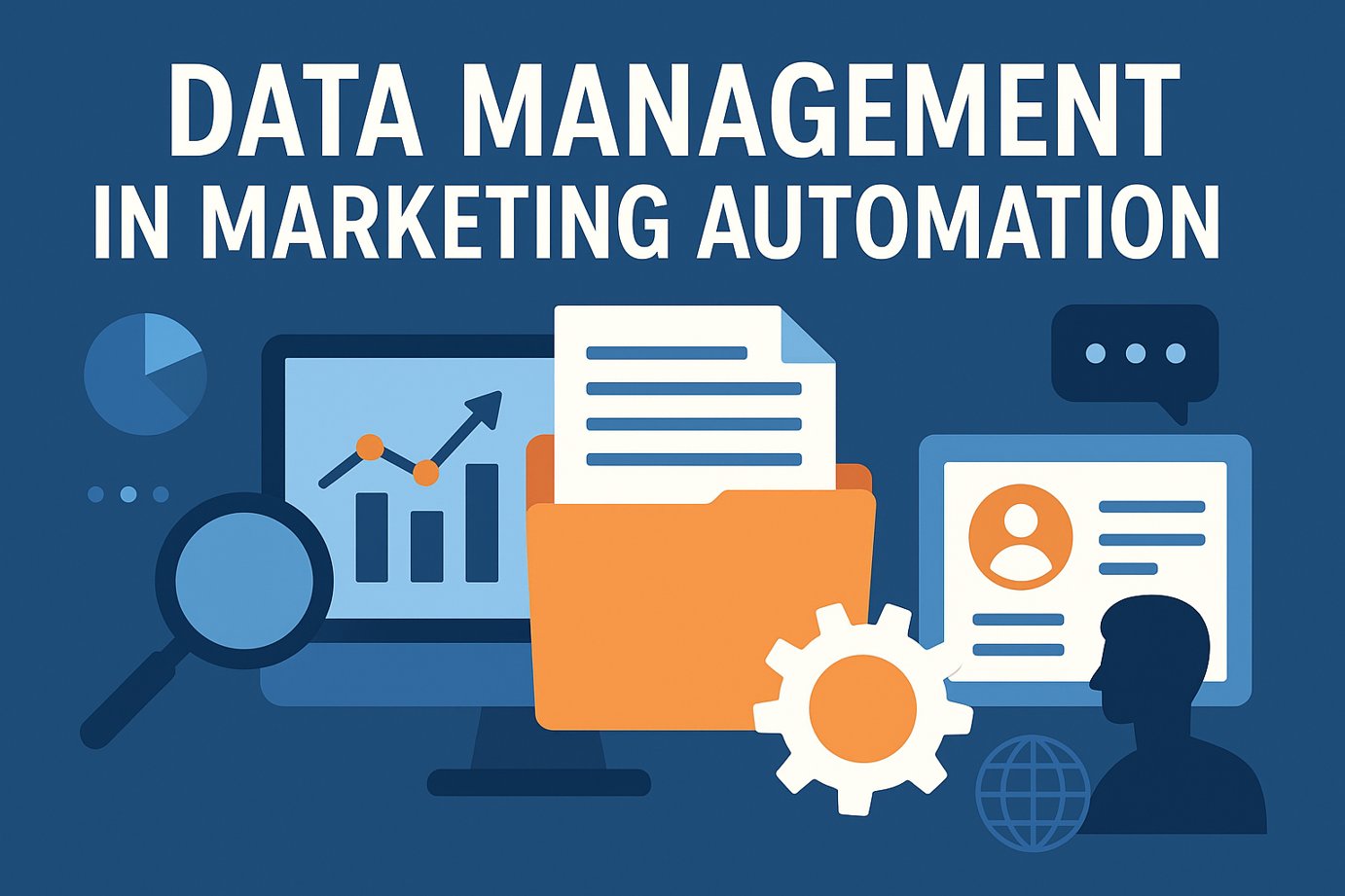
Data Management in Marketing Automation
What is Data Management in marketing automation, and why does it matter?
Data management involves the collection, organization, storage, and maintenance of lead information on marketing tools like Marketo, HubSpot, Pardot, etc., so it can be used effectively by making certain that the information in hand is accurate and precise. Clean data allows you to send marketing information to relevant audiences. Hence, you are neither spending time communicating to uninterested audiences nor losing potential customers. Everything works more smoothly with clean data.
To begin with, assume that you’re in the middle of a marketing project, and you have a large pool of people that includes potential prospects, active leads, and people who have previously engaged with your company. If the information you have about those people is incorrect, missing, or disorganized, you have already set yourself up for failure.
Let’s say you sent an invitation to an event in New York to one of your associates based in India, and you’ve been sending it repeatedly for about a month. Now, what’s the likely outcome of this scenario? The invitee, who we assume is a potential client, in this case, grows increasingly frustrated. The event is irrelevant to them, and over time, they become resentful and eventually unsubscribe from your services.
So to summarize, it is an overall discipline of handling and organizing data so it can be used effectively for Marketing. However, within this, we have 2 core processes that make sure the data stays useful, called Data Cleaning and Hygiene.

Data Management in the Context of Data Hygiene and Cleaning
What is Data Cleaning?
Data cleaning is the process of focusing on correcting/fixing, or removing incorrect, outdated, duplicate, or incomplete information from our database. It’s usually done as a one-time or periodic clean-up, rather than daily maintenance.
Why is Clean and Accurate Data Crucial?
Let us go into this a little deeper. Why is accurate and clean data important?
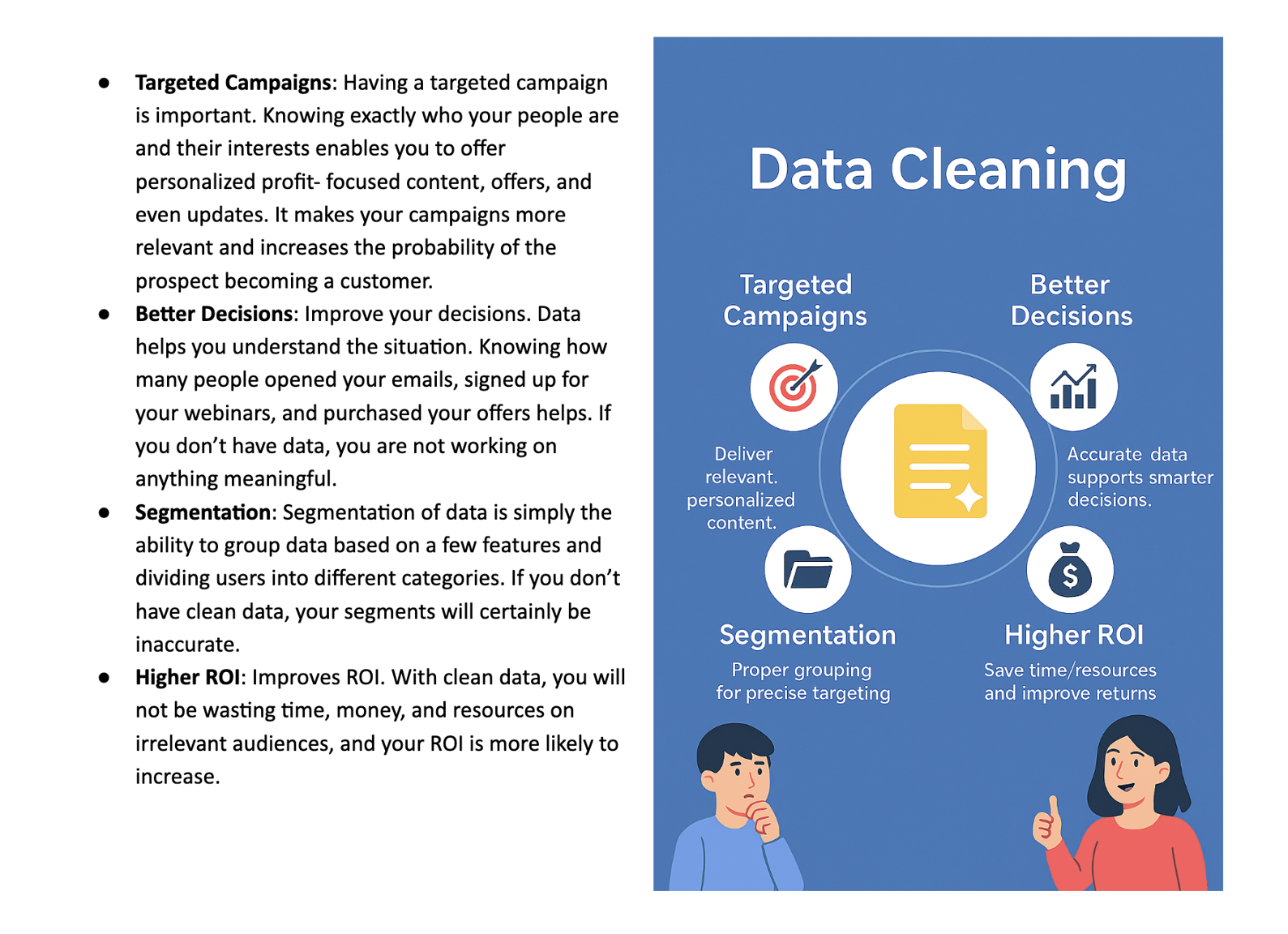
Data Cleaning
Common Issues with Dirty Data:
There are numerous issues that poor data quality can create:
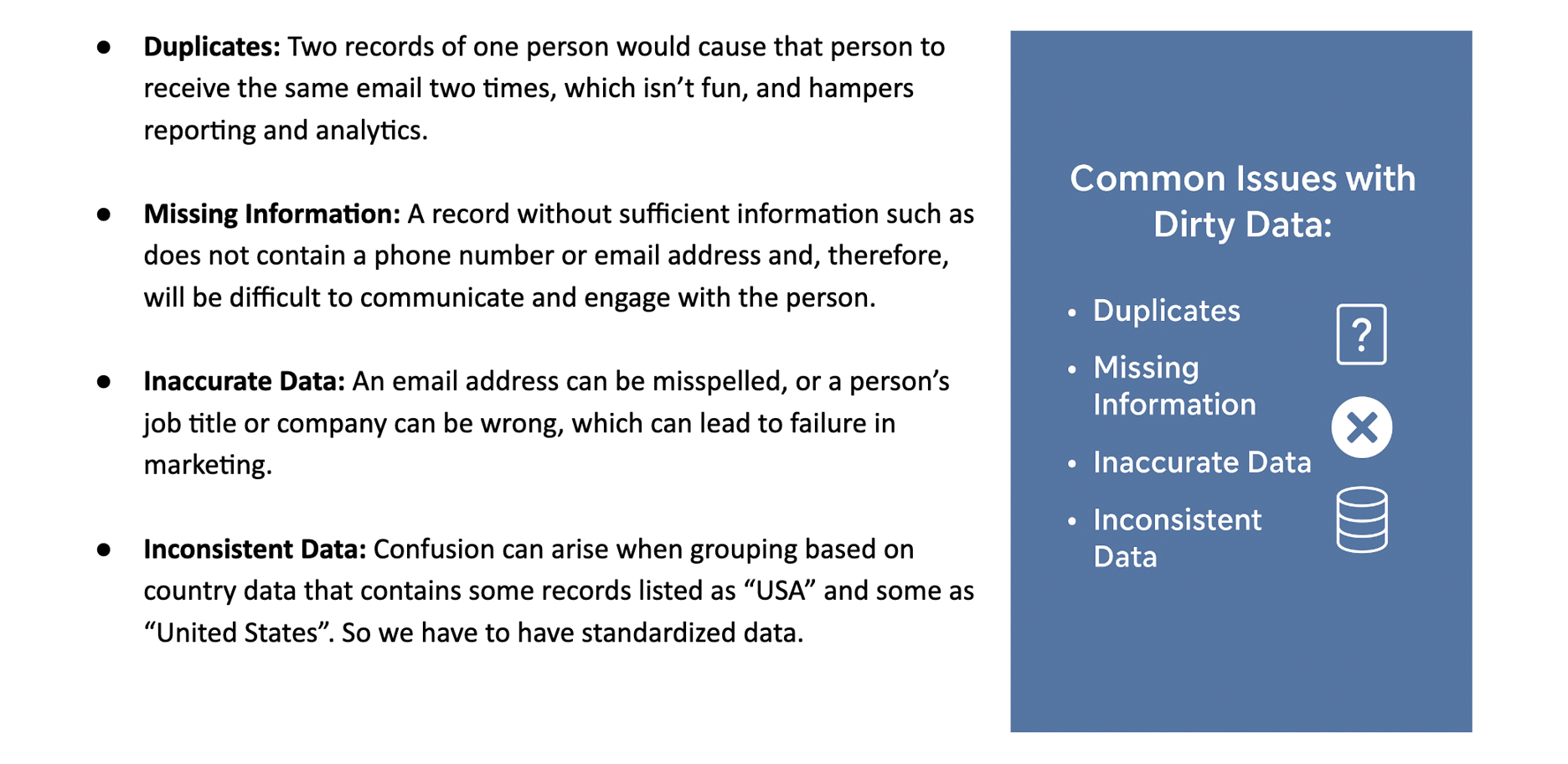
Common Issues with Dirty Data
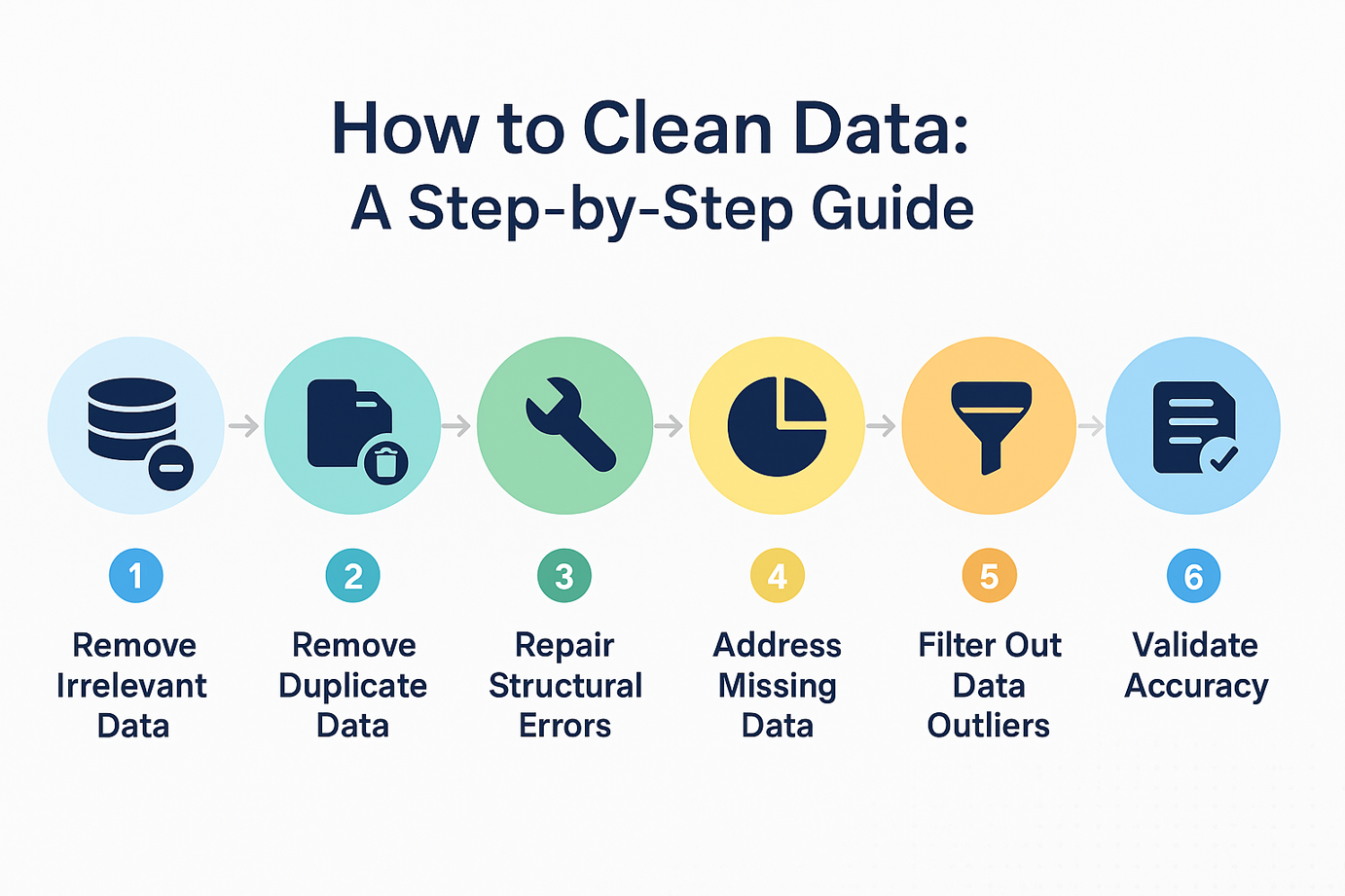
How to Clean Data Step by Step
What is Data Hygiene?
The act of data hygiene means keeping customer and potential customer data accurate, relevant, and organized so that it can be relied upon for campaign strategy, reporting, and decision making. Data hygiene consists of ongoing and repetitive tasks. This is because data hygiene ensures the usefulness of the database, while personal hygiene ensures the user’s health and well-being.
Data hygiene is like brushing your teeth; it may seem small, but if you skip it, the problems pile up fast.
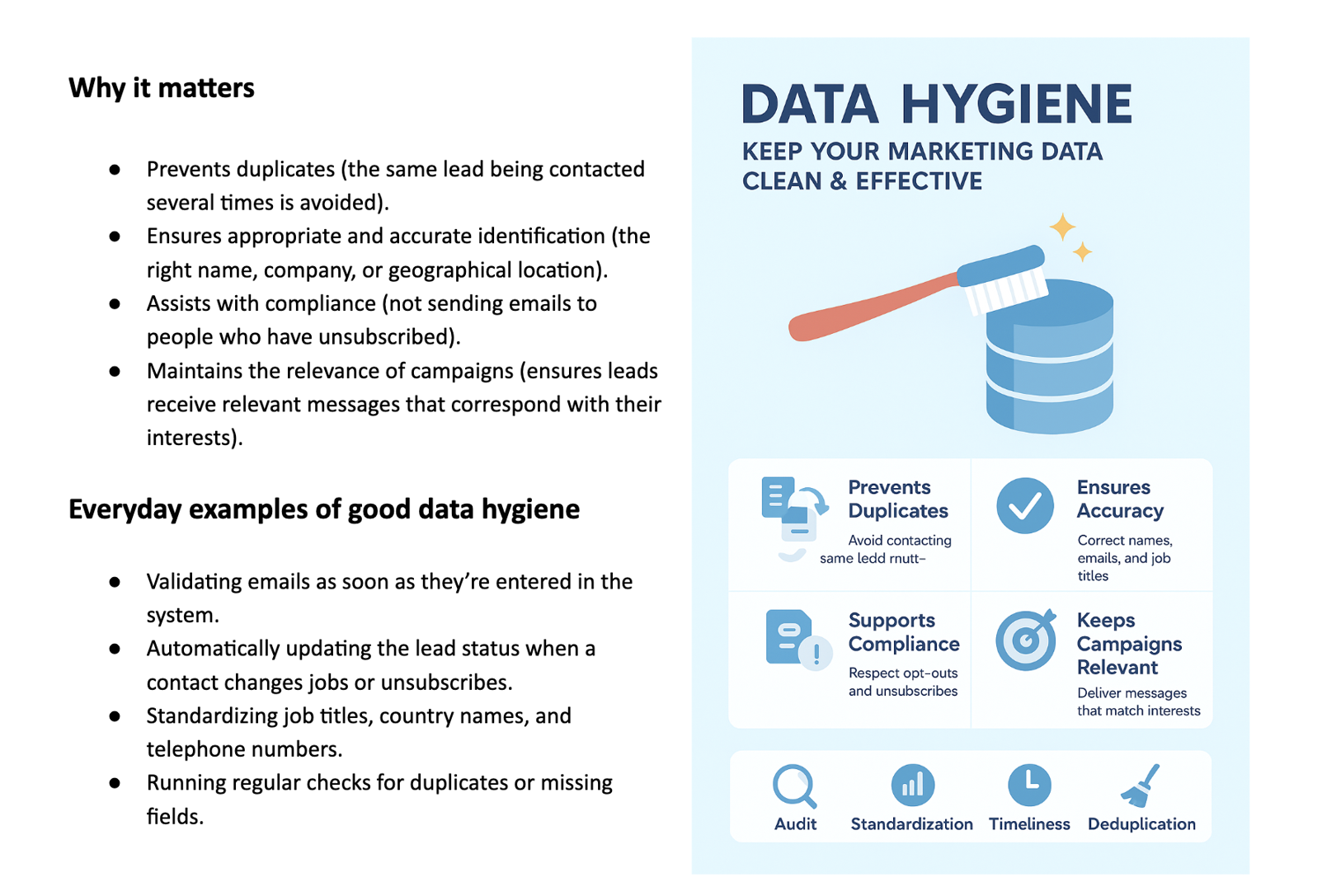
Data Hygiene
Maintaining the best practices for data hygiene.
- Audits: These can help set timelines and confirm the integrity of the data. For example, take periodic snapshots of your data, say every six months, to compare and analyze the status of your data.
- Eliminating Duplicates: Customer data duplication can lead to unnecessary use of time and money on marketing campaigns. Every customer should be seen and acknowledged uniquely and only once in the entire database.
- Data Standardization: Standardization eliminates the variations in how data is captured, for instance, in phone numbers, and how address information is captured. All variations in data sets make the records hard to handle.
- Timeliness & Accuracy: Keeping data up-to-date ensures that you’re not acting on outdated information. Always verify and refresh customer data regularly.
By following these data management principles, you will help ensure your marketing campaigns are more effective, efficient, and impactful, ultimately leading to better customer experiences and improved results.
Data Cleaning vs. Data Hygiene: What’s the Difference?
I will explain the distinction and example of data hygiene and data cleaning through the example of cleaning and maintaining one’s teeth.
Data Hygiene
Think of it like brushing your teeth daily.
- It is the constant ongoing practice of maintaining your data precise, consistent, and current.
- It is the practice of deduplication, email verification at data capture, and suppressing respondents who unsubscribe.
- Avoid having a backlog of problems.
Data Cleaning
Like having a dentist appointment.
- It is the practice of outdated and obsolete contacts, fictitious names, standardization of phone numbers, and duplication.
- Fix what’s already broken.
Both are essential:
If you only clean without hygiene, you will always have a mess. If you only focus on hygiene without cleaning, you will have unresolved historical issues in your system.

Data Hygiene vs Data Cleaning
Types of Data in Marketing Automation:
Below is the breakdown of common data collected by marketing automation software and how it helps in more effective marketing:
Most Significant Consideration in Marketing Deals.
Demographic Data:
Demographic data represents the basic characteristics of a customer base, such as age, gender, geographic location, occupation, and income level. In essence, it’s elementary data or basic information about who your customers are.
- Age, gender, location, income level
- It helps segment the audience and tailor messaging to specific groups.
Behavioral Data / Engagement Data:
Behavioral Data is all about how our prospects interact with us. Such as when they visit web pages on the website, open an email, or click on products. It identifies customer interests and enables targeted campaigns (e.g., sending offers based on browsing habits).
Preference Data:
Preference data, as the term says, is what our customers prefer. How do they want to interact with us? Would they like to receive emails, text messages, or social media updates? What sort of content do they enjoy?
Leveraging this, we can enhance engagement by reaching customers through their preferred methods (e.g., email vs. SMS).
Purchase History:
This kind of information lets you know what your customers have previously purchased, how frequently they buy from you, and how much they usually spend. It also enables personalized promotions and recommendations (e.g., offering discounts to frequent buyers).
Feedback Data:
Feedback data comes directly from customers. For instance, their reviews, comments, surveys, or customer service exchanges in which they share their opinions about your goods or services. Additionally, it provides insights into satisfaction, allowing for improvements and smarter decision-making.
Therefore, Businesses can create individualized, powerful customer experiences that increase engagement, loyalty, and sales by leveraging data through marketing automation.
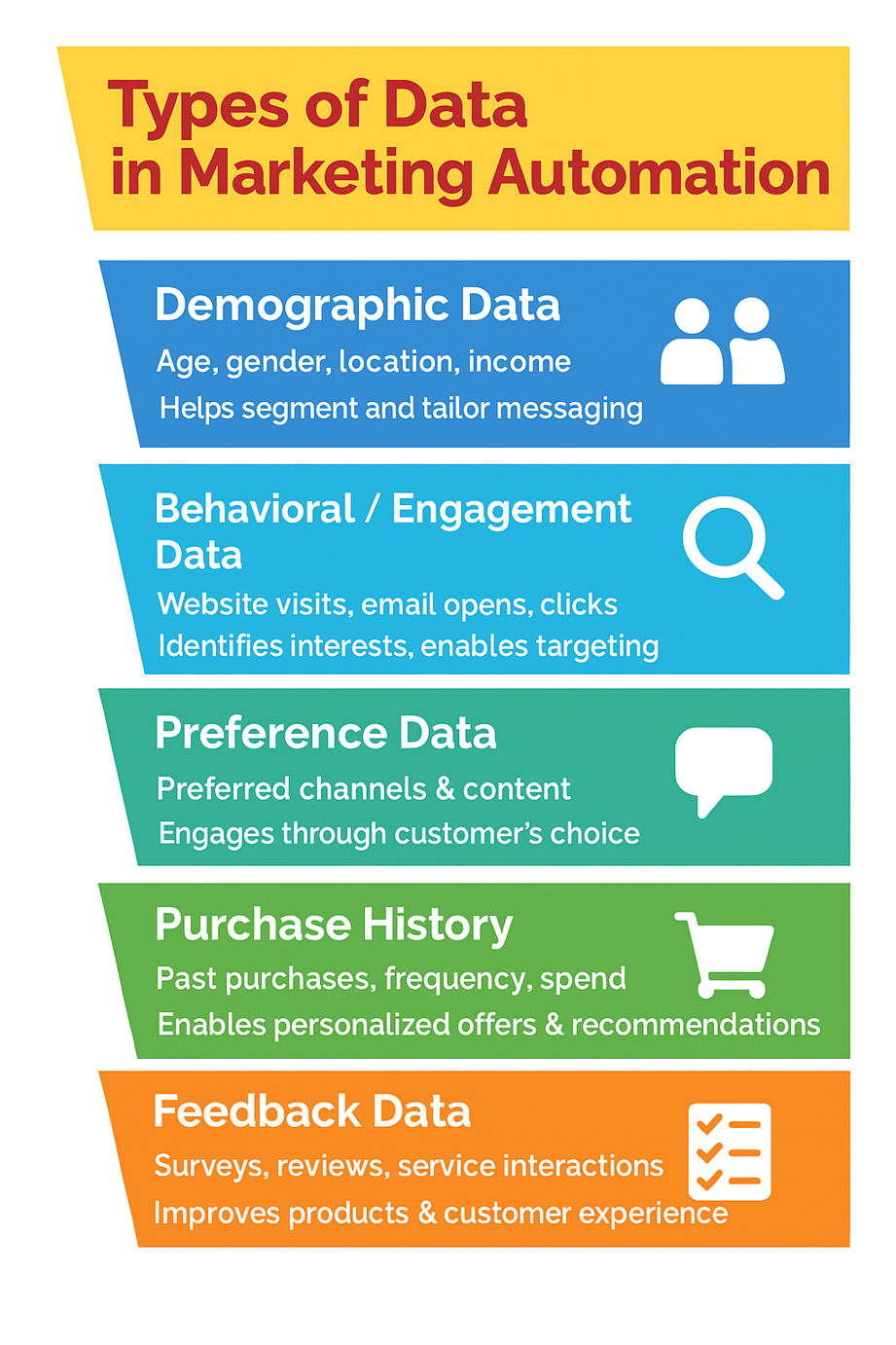
Type of Data in Marketing Automation
What is Data Enrichment?
The process of adding more information to the data you already have about your leads, customers, clients, or prospects is known as data enrichment.
Data enrichment fills in the gaps and gives you a more comprehensive picture of each individual or business, while data hygiene keeps data clean, and data cleaning corrects errors.
In order to have a more comprehensive and useful view of your leads, we can define data enrichment as the process of adding additional information to existing records, such as job title, company size, industry, or location. It facilitates improved decision-making, personalization, and segmentation.
How It Works
Let’s say you have only captured a name and email address from a signup form. With enrichment, you can add:
- Job title
- Company name
- Industry
- Company size
- LinkedIn profile
- Location
- Social media handles
This can be done through:
- Manual research (Looking up info on LinkedIn, Websites, etc.)
- Third-party data providers (e.g., ZoomInfo, Clearbit, etc.)
- Marketing automation tools (Marketo, HubSpot).
Why It Matters
- Better Segmentation: Rather than sending the same generic email to leads, you can group them by industry, company size, or location.
- Personalization: You can send directly relevant content by using your job title or interests.
- Lead Scoring: Using enriched data, the appropriate prospects (decision-makers versus interns, for example) are given higher scores.
- Improved Sales Efficiency: Sales teams spend more time speaking with qualified leads and less time conducting research.
- Stronger Analytics: Richer data means better insights into customer behavior and campaign performance.
- Increased Sales Efficiency: Sales teams spend more time speaking with qualified leads and less time conducting research. Better insights into consumer behavior and campaign performance are possible with richer data.
Example in Real Life
Without enrichment:
You only know John Smith, john@email.com.
With enrichment:
You know John Smith, VP of Marketing at TechCorp, based in New York, with a company size of 500+ and a LinkedIn profile link.
Now you can send John content on “Enterprise Marketing Trends” instead of generic newsletters, making your outreach much more effective.

Data Enrichment
Conclusion:
Investing in Data Management through Cleaning, Hygiene, and Enrichment leads to high-quality data, maintaining relevance for the targeted campaigns, ultimately driving higher engagement and conversion.
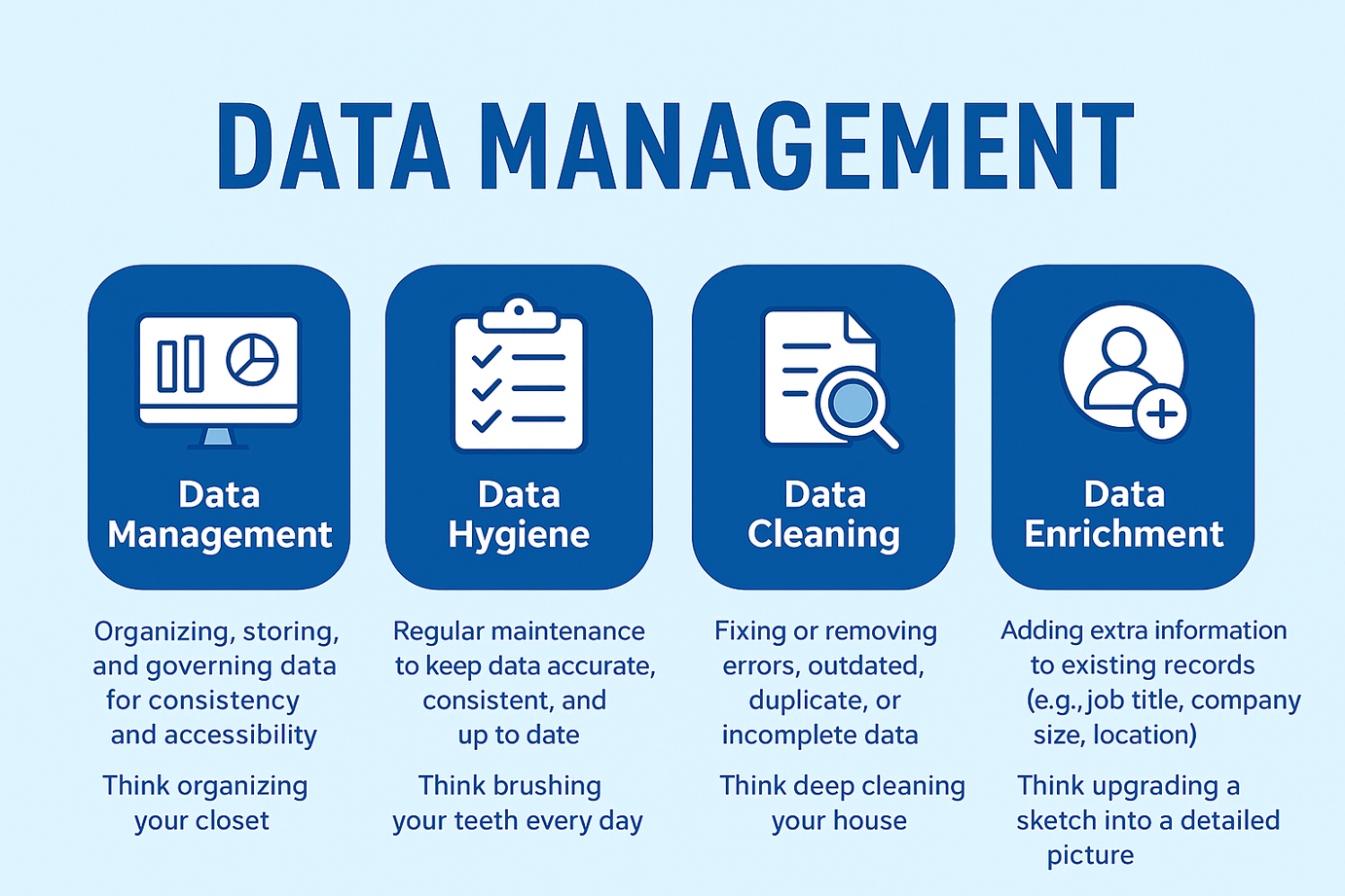
Data Management Overall

